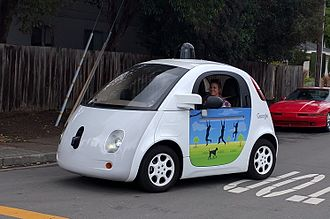Autonomous Vehicles and Consumption
Halina Brown
Technologies of personal mobility – cars, airplanes – enable us to pursue lifestyles of big consumption. The lesson from his experience is that we should think in advance about potential future impacts on consumption of emerging new technologies, such as autonomous vehicles, popularly known as self-driving cars. Judging by the large investments made by Uber and Google in developing this disruptive technology, probably the initial fleets of AVs will be introduced by car sharing enterprises. It will, of course, take time, adaptations in the existing infrastructure and mapping technologies, and a lot more testing, but I would not be surprised to see many of these vehicles on the roads within a decade. As a mark of an incipient change, later this month American Architectural Foundation is scheduled to release guidelines for cities and towns to develop policies and principles around this new technology.
The proponents of ride-hailing AVs point to their many advantages, such as declining collisions and insurance costs, access to mobility by the elderly, children and handicapped people, smoother traffic flow and associated lower combustion emissions per mile, and increased efficiency by way of increased density of cars on the road. The amount of land dedicated to parking will also decline. On the other hand, unemployment among millions of truck drivers (3.5 in the US), and additional millions of insurance agents and others in the transportation sector will be inevitable. The truckers unions will lose their power. Hence, increase in economic inequality.
And what about the impacts on consumption and lifestyles? On the one hand, suburban garages may become an endangered species, freeing up a huge amount of built-up land for other uses, such as vegetable gardens, or for greater density of human dwellings. That would decrease the driving distances per capita and energy consumption. But there is also a possibility of a rebound effect. The greater ease of mobility and greater tolerance of traffic jams by passengers who would be able to engage in other activities while riding would increase the number of trips. Suburban sprawl might also increase as commuting from distant suburbs to city centers would not seem so onerous.
Conclusion: This is the time to adopt strategies of maximizing the ecological benefits of AVs and minimizing the drawbacks. For instance, it would be smart to accelerate adoption of land planning policies that discourage sprawl; or to think of institutional arrangements for providing support in daily chores for people who will depend on AV ride sharing services. But that requires a collaboration between municipal planners, technology firms, and social services agencies.

